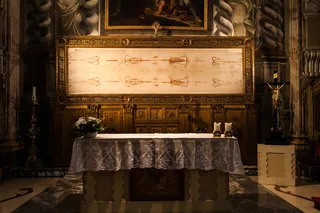Fireball: Visitors from Darker Worlds is not your typical science documentary. There are no diagrams, no explanatory green-screens, no points where the narrator stops to define terms.
Of course, you wouldn’t expect that approach from Werner Herzog, the director of wild-eyed reveries like Fitzcarraldo and clear-eyed examinations of humanity’s relationship with nature like Grizzly Man. Neither does that style suit University of Cambridge volcanologist Clive Oppenheimer, Herzog’s co-director.
After Herzog featured Oppenheimer in his 2007 documentary Encounters at the End of the World, the pair collaborated on the film Into the Inferno — a meditation on volcanos, the people who study them, and humanity’s relationship with them. And now, the pair are back at it again with Fireball, taking that same anthropologic approach to meteorites and impact craters.
The duo of Oppenheimer and Herzog are not interested in making an “educational film” with Fireball, although you’ll surely learn something interesting ...














